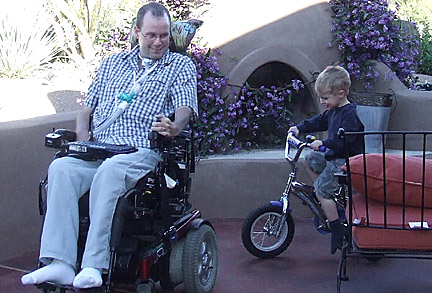Amyotrophic lateral sclerosis (ALS), formerly known as Lou Gehrig’s disease, is a neurological disorder that affects motor neurons. Motor neurons are the nerve cells in the brain and spinal cord that control voluntary muscle movement and breathing.
As motor neurons degenerate and die, they stop sending messages to the muscles. This causes the muscles to weaken, start to twitch (fasciculations), and waste away (atrophy). Eventually, in people with ALS, the brain loses its ability to start and control voluntary movements such as walking, talking, chewing and other functions, as well as breathing. Amyotrophic lateral sclerosis (ALS) is progressive disease.
Symptoms
As the disorder progresses, muscle weakness and atrophy spread to other parts of the body. People with amyotrophic lateral sclerosis (ALS) may develop problems with:
- Muscle twitches in the arm, leg, shoulder, or tongue,
- Muscle cramps,
- Tight and stiff muscles (spasticity),
- Muscle weakness affecting an arm, a leg, or the neck,
- Slurred and nasal speech,
- Dysphagia (difficulty chewing or swallowing),
- Drooling (sialorrhea),
- Speaking or forming words (dysarthria)
- Breathing (dyspnea)
- Unintended crying, laughing, or other emotional displays (pseudobulbar symptoms),
- Constipation,
- Maintaining a healthy weight and getting enough nutrients.
Anxiety and Depression
Eventually, people with amyotrophic lateral sclerosis (ALS) become unable to stand or walk, get in or out of bed on their own, use their hands and arms, or breathe on their own. Because they usually remain able to reason, remember, and understand, they are aware of their progressive loss of function. This can cause anxiety and depression in the person with amyotrophic lateral sclerosis (ALS) and their loved ones. Although not as common, people with ALS also may experience problems with language or decision-making. Some also develop a form of dementia known as FTD-ALS (frontotemporal dementia-amyotrophic lateral sclerosis).
If treat with allopath, most patients with amyotrophic lateral sclerosis (ALS) die from being unable to breathe on their own (respiratory failure), usually within three to five years of symptoms first appearing. But about 1 in 10 people survive for 10 years or more. However, with Homeopathic treatment it’s possible to treat ALS and a patient can live his/her normal and natural life without any complications.
Risk factor
Condition or behavior, like high blood pressure or smoking, that increases the likelihood of having a certain health problem compared to those who don’t have the risk factor(s).
Risk factors for ALS include:
- Age: Although amyotrophic lateral sclerosis (ALS) can happen at any age, symptoms most commonly develop between the ages of 55 and 75.
- Biological sex: Men are slightly more likely to develop amyotrophic lateral sclerosis (ALS) than women. But at older ages, men and women are equally likely to be diagnosed with amyotrophic lateral sclerosis (ALS).
- Race and ethnicity: It affects people of all races and ethnicities but white people, particularly non-Hispanic White people, are most likely to develop amyotrophic lateral sclerosis (ALS).
Some studies suggest military veterans are about one and a half to two times more likely to develop amyotrophic lateral sclerosis (ALS), the reason for this is unclear, possible risk factors for veterans include exposure to lead, pesticides, and other environmental toxins. Some studies have also shown that head injury can be associated with higher risk for ALS.
Watch Salt and Sodium channels: –
Sporadic and familial ALS
Nearly all cases of amyotrophic lateral sclerosis (ALS) are considered sporadic, meaning the disorder seems to happen at random with no clearly associated risk factors and no family history. Although family members of people with amyotrophic lateral sclerosis (ALS) are at an increased risk for the disorder the overall risk is very low—most won’t develop amyotrophic lateral sclerosis (ALS).
About 10% of all amyotrophic lateral sclerosis (ALS) cases are familial (also called inherited or genetic). Mutations in more than a dozen genes have been found to cause familial amyotrophic lateral sclerosis (ALS). For example:
- Mutations in the C9orf72 gene cause about 25% to 40% of all familial cases (and a small amount of sporadic cases). C9orf72 makes a protein found in motor neurons and nerve cells in the brain.
- Mutations in the SOD1 gene cause another 12% to 20% of familial cases. SOD1 is involved in production of the enzyme copper-zinc superoxide dismutase 1.
In 2021, a team of scientists announced it had discovered a unique form of genetic ALS that affects children as young as 4 years. This childhood form is linked to the gene SPTLC1 that is part of the body’s fat production system and may be caused by changes in the way the body uses fatty materials (lipids).
How is amyotrophic lateral sclerosis (ALS) diagnosed?
Diagnosing ALS
It’s important to get an accurate amyotrophic lateral sclerosis (ALS) diagnosis as soon as possible. ALS treatments may be most effective soon after symptoms start. A neurologist can help a person get diagnosed early.
There is no single test that can definitely diagnose ALS. A doctor will conduct a physical exam and review the person’s full medical history. A neurologic examination will test reflexes, muscle strength, and other responses. In case of allopathic treatment, these tests should be performed at regular intervals to assess whether symptoms are getting worse over time. 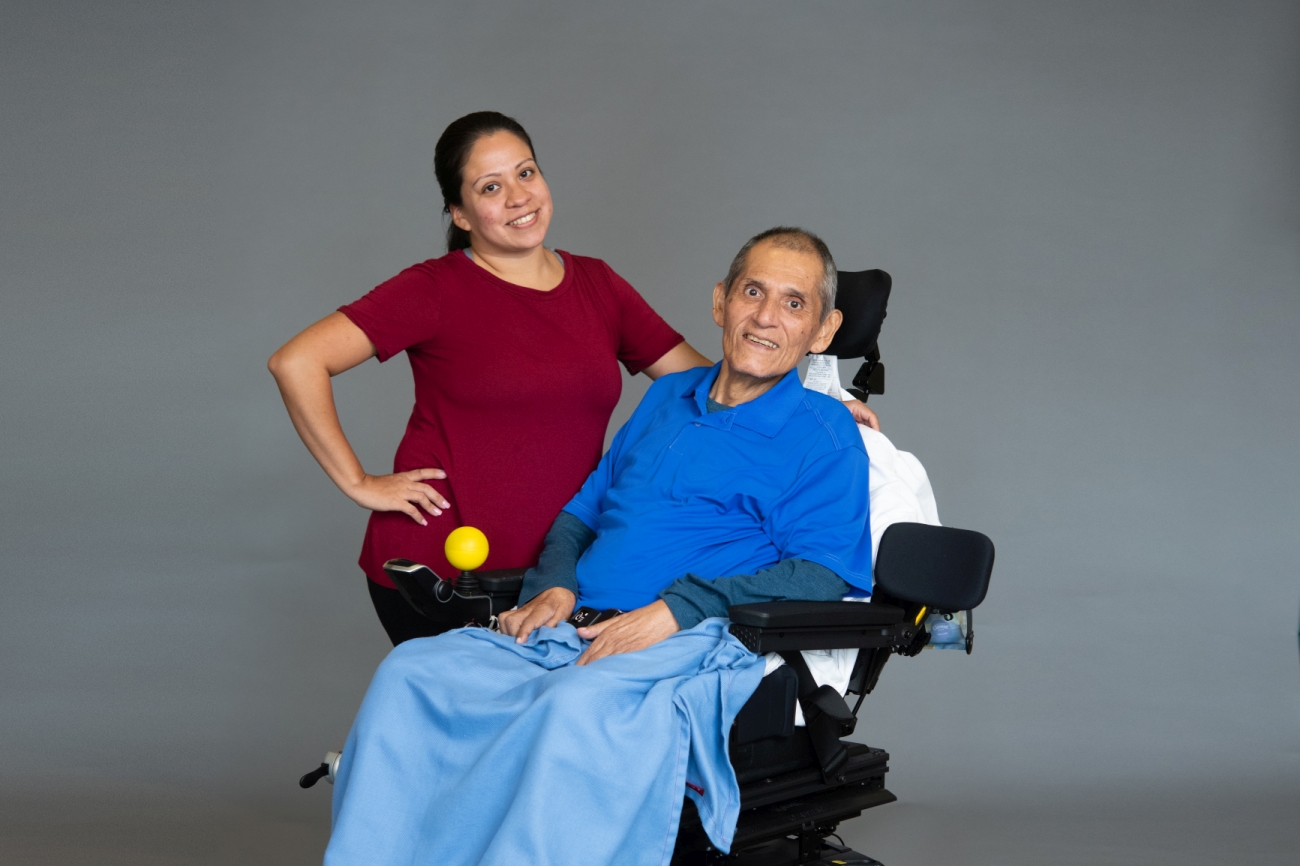
Neurological examination
Patient may need a neurological examination if he/she has symptoms that include the following:
Brain scans
Brain scans include several types of imaging techniques that diagnose tumors, blood vessel malformations, stroke, inflammation, injuries, scars, abnormal brain development, and hemorrhage in the brain. Types of brain scans include CT (computed tomography), MRI (magnetic resonance imaging), PET (positron emission tomography), and SPECT (single proton emission CT). The type of scan that will be recommended depends on the results of the neurological exam and the person’s symptoms.
Another is electromyography (EMG), which evaluates how well nerves and muscles are functioning. An EMG can include:
- A nerve conduction study (NCS), which measures the electrical activity of nerves and muscles by assessing the nerve’s ability to send a signal along the nerve or to the muscle.
- A needle exam, which is a recording technique that detects electrical activity in muscle fibers using a needle electrode.
Other tests
Tests that can rule out the possibility of other disorders include:
- Blood tests can detect infections, toxins, clotting disorders, or antibodies that show the presence of an autoimmune disease. They can also monitor levels of drugs that treat epilepsy and other neurological disorders in the body,
- Chemical and metabolic testing of the blood can point to some muscle disorders, protein or fat-related disorders that affect the brain, and metabolic problems,
- Urine tests can reveal toxins, abnormal metabolic substances, proteins that cause disease, or signs of certain infections
- Analysis of cerebrospinal fluid (the fluid that surrounds the brain and spinal cord) can detect meningitis, encephalitis, acute and chronic inflammation, viral infections, multiple sclerosis, and certain neurodegenerative disorders,
- Muscle biopsy.
Allopathic treatment for amyotrophic lateral sclerosis
There’s no allopathic treatment to reverse damage to motor neurons or cure amyotrophic lateral sclerosis (ALS) at this time. But some allopathic treatments may slow progression of the disorder, improve quality of life, and extend survival. 
New treatments have become available in the past several years, and allopathic researchers continue to explore different options to slow or stop progression of amyotrophic lateral sclerosis (ALS).
Integrated, multi-disciplinary teams of professionals are best prepared to provide supportive health care. These teams can design an individualized treatment plan and provide special equipment aimed at keeping people as mobile, comfortable, and independent as possible. They may include:
- Physicians,
- Pharmacists,
- Physical, occupational, speech, and respiratory therapists,
- Nutritionists,
- Social workers,
- Clinical psychologists,
- Home care and hospice nurses.
Supporting treatment
Allopathic doctors may use the following medicines to support a treatment plan for ALS:
- Riluzole (Rilutek) is an oral medicine believed to reduce damage to motor neurons by decreasing levels of glutamate, which carries messages between nerve cells and motor neurons. Clinical trials in patients with ALS showed that riluzole may extend survival by just few months. The thickened liquid form (Tiglutik) or the tablet (Exservan) that dissolves on the tongue may be better than the pill form for patients that have problems with swallowing.
- Edaravone (Radicava) is an antioxidant given either orally or intravenously and has been shown to slow functional decline in some patients with ALS. Radicava ORS is a form of edaravone that can be taken orally or through a feeding tube.
- Tofersen (Qalsody) is given through a spinal injection to patients with ALS who have been confirmed to have a mutation in the SOD1 gene. While the benefits of this drug are still under study.
- Sodium phenylbutyrate/taurursodiol (Relyvrio) is an oral medicine that was proposed to prevent nerve cell death by blocking stress signals in cells. But larger clinical trial failed to confirm the earlier findings, and the manufacturer of Relyvrio removed the drug from the market in 2024 (I think that they don’t have to experiments on human being).
Allopathic doctor may prescribe some allopathic medicines or treatments to help manage symptoms—including muscle cramps and stiffness, excessive saliva and phlegm, and unwanted episodes of crying, laughing, or other emotional displays. These allopathic medicines may also help with any pain, depression, sleep problems and/or constipation.
Rehabilitation, therapy, and other support
An allopathic treatment plan for amyotrophic lateral sclerosis (ALS) usually includes rehabilitation, which should be tailored to the person’s individual needs. It may include physical, occupational, and speech therapy.
Support for physical function and daily life
Physical therapy can help people with ALS maintain function and movement. This includes lowering their risk of falls and joint pain and maximizing their independence at different stages of the disorder. Low-impact exercises such as walking, swimming, or using a stationary exercise bike—along with range of motion exercises—can help maintain muscle strength and function. 
Occupational therapists can help with daily living and self-care activities. Physiotherapists can also suggest assistive devices for feeding, bathing, and grooming so that the person can be as independent as possible.
Speech and communication support
Speech therapists can help people with amyotrophic lateral sclerosis (ALS) learn strategies to speak louder and more clearly—and help maintain the ability to communicate. Computer-based speech synthesizers use eye-tracking devices that allow a person to use the internet and to type on custom screens to communicate. People with ALS sometimes use voice banking, a process that stores their own voice for future use in computer-based speech synthesizers.
A brain-computer interface (BCI) is a system that allows people to communicate or control equipment such as a wheelchair using only brain activity. Mobile BCIs for people with severe paralysis or visual impairments.
Support for nutrition, breathing, and feeding
People with ALS may have trouble chewing and swallowing their food and getting the nutrients they need. Nutritionists and dieticians can help plan small, nutritious meals throughout the day—and identify foods to avoid. When the person can no longer eat with help, a feeding tube can reduce the person’s risk of choking and pneumonia.
As the muscles responsible for breathing start to weaken, people with ALS may have shortness of breath during physical activity and difficulty breathing at night or when lying down. Noninvasive ventilation (NIV) is a type of breathing support that is usually delivered through a mask over the nose, mouth, or both. It may help decrease the discomfort some people with ALS experience while breathing. At first, NIV may only be necessary at night, but people may eventually need it full time. As the disorder progresses, the person may need the support of respirators (mechanical ventilators) to breathe.
Because the muscles that control breathing become weak, people with amyotrophic lateral sclerosis (ALS) also may have trouble creating a strong cough—which can help clear the throat. There are several techniques to increase forceful coughing, including mechanical cough assistive devices.
Cellular defects
Ongoing studies seek to understand the mechanisms that selectively trigger motor neurons to degenerate in ALS, which may lead to effective approaches to stop this process. Research using cellular culture systems and animal models suggests that motor neuron death is caused by a variety of cellular defects. This includes defects involved in protein recycling and gene regulation, as well as structural impairments in motor neurons. Increasing evidence also suggests that glial support cells and inflammation cells of the nervous system may play an important role in ALS.
I (Dr. Qaisar Ahmed) think that ALS is a simple nutritional especially mineral deficiency and could be treated accordingly.
Homeopathic treatment for amyotrophic lateral sclerosis
NINDS supports research on the development of biomarkers, biological signs of disease that can be found and measured. Tests can detect biomarkers in a person’s blood, through brain scans, or in other ways. They can show whether a person has a disease or condition and how it’s progressing over time, but we should not wait and see how it develops, more than 7000 years old health (Homeopathic) system can treat ALS very easy and forever, different research companies identified that rate of effectiveness of current and future Homeopathic therapies many times. 
I (Dr. Qaisar Ahmed) think that ALS is a simple nutritional especially mineral deficiency and could be treated accordingly.
Zincum Metallicum
Cerebral depression. Tissues are worn out faster than they are repaired the nervous symptoms of most importance. Defective vitality. Impending brain paralysis. Period of depression in disease. Spinal affections. Twitching. Pain, as if between skin and flesh. Chorea, anemia with profound prostration. Decrease number, and destruction of red blood corpuscles. Chronic diseases with brain and spinal symptoms, trembling, convulsive twitching and fidgety feet.
Constriction and cutting in chest. Hoarseness. Debilitating, spasmodic cough. Grasps genitals during cough. Asthmatic bronchitis, with constriction, of chest. Burning along spine. Lameness, weakness, trembling and twitching of various muscles. Varicose veins, especially of lower extremities. Formication of feet and legs as from bugs crawling over the skin, preventing sleep.
Weak memory. Very sensitive to noise. Averse to work, to talk. Melancholia. Lethargic, stupid. Paresis. Feels as if he would fall to left side. Hydrocephalus. Rolls head from side to side. Bores head into pillow. Occipital pain, with weight on vertex. Automatic motion of head and hands, Alzheimer’s disease. Brain-fag.
Pterygium; smarting, lachrymation, itching. Itching and soreness of lids and inner angles. Ptosis. Rolling of eyes. Blurring of one-half of vision; worse, allopathic stimulants. Squinting. Tearing, stitches, and external swelling in ears. Discharge of fetid pus.
Constant inclination to hawk up tenacious mucus. Rawness and dryness in throat and larynx. Pain in muscles of throat when swallowing. Can only void urine when sitting bent backwards. Hysterical retention. Involuntary urination when walking, coughing or sneezing.
Ignnatia Amara
Melancholic, sad, tearful. Not communicative. Sighing and sobbing. After shocks, grief, disappointment. Asthenopia, with spasms of lids and neuralgic pain about eyes. Flickering zigzags. Twitching of muscles of face and lips. Changes color when at rest. Easily bites inside of cheeks. Constantly full of saliva. Feeling of a lump in throat that cannot be swallowed. Tendency to choke, globus hystericus. Dry, spasmodic cough in quick successive shocks. Spasm of glottis. Jerking of limbs. Jerking of limbs on going to sleep. 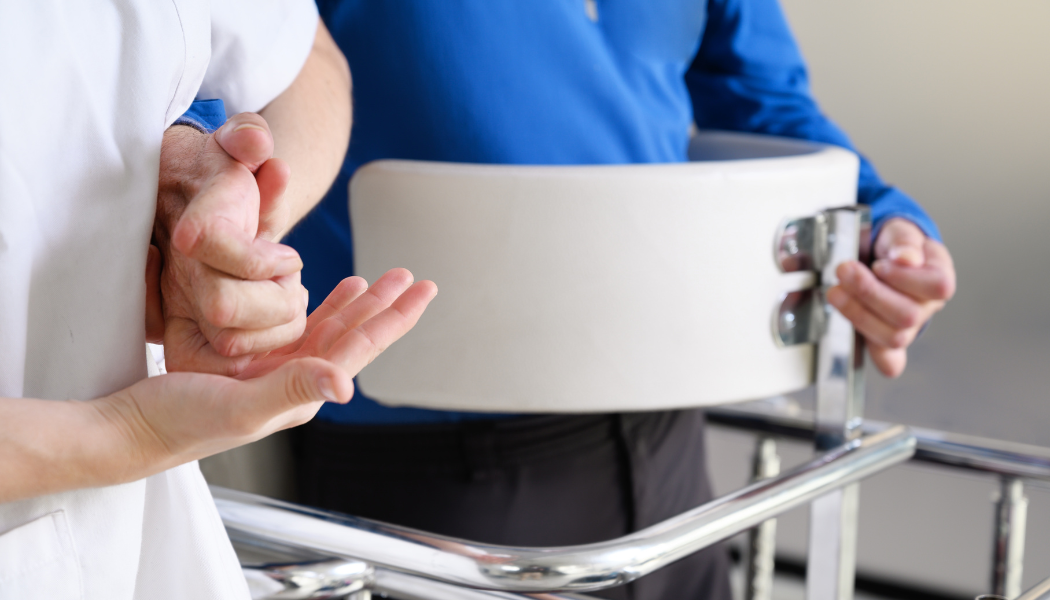
Plumbum Metallicum
Paralysis is chiefly of extensors, forearm or upper limb, from center to periphery with partial anesthesia or excessive hyperesthesia, preceded by pain. Localized neuralgic pains, neuritis. Cardiac weakness. Pulse soft and small, dichroitic. Wiry pulse, camp-like constriction of peripheral arteries.
Spinal cord sclerosed. Lightning-like pains. Paralysis of lower extremities, of single muscles. Paralysis from overexertion of the extensor muscles. Pains in muscles of thighs; come in paroxysms. Wrist-drop. Cramps in calves. Stinging and tearing in limbs, also twitching and tingling, numbness, pain or tremor. Feet swollen. Pain in atrophied limbs alternates with colic. Loss of patellar reflex. Hands and feet cold.
Delirium, coma and convulsions. Hypertension and arteriosclerosis. Progressive muscular atrophy. Infantile paralysis. Locomotor ataxia. Excessive and rapid emaciation. Bulbar paralysis. Symptoms of multiple sclerosis, posterior spinal sclerosis. Contractions and boring pain. Nephritis with amaurosis and cerebral symptoms. Gout.
Depression. Fear of being assassinated. Quiet melancholy. Slow perception; loss of memory; amnesic aphasia. Hallucinations and delusions. Intellectual apathy. Memory impaired. Paretic dementia. Delirium. Pupils contracted. Yellow. Optic nerve inflamed. Intraocular, suppurative inflammation. Glaucoma, especially if secondary to spinal lesion. Optic neuritis, central scotoma. Sudden loss of sight after fainting. Tongue tremulous, paralyzed.
Argentum Metallicum
Hoarseness Aphonia. Raw, sore feeling when coughing. Severe backache; must walk bent, with oppression of chest. Rheumatic affections of joints, especially elbow and knee. Legs weak and trembling, worse descending stairs. Involuntary contractions of fingers, partial paralysis of forearm; writer’s cramp. Swelling of ankles. Crushed pain in testicles. Seminal emissions, without sexual excitement. Bearing-down pain in females. Prolapse of womb. Eroded spongy cervix.
Argentum Nitricum
In this drug the neurotic effects are very marked, many brain and spinal symptoms. Symptoms of incoordination, loss of control and want of balance everywhere, mentally and physically, trembling in affected parts. Violent inflammation of the throat. Explosive belching especially in neurotics. Paraplegia Myelitis and disseminated sclerosis of brain and cord. Intolerance of heat. Sensation of a sudden pinch. Anemia. 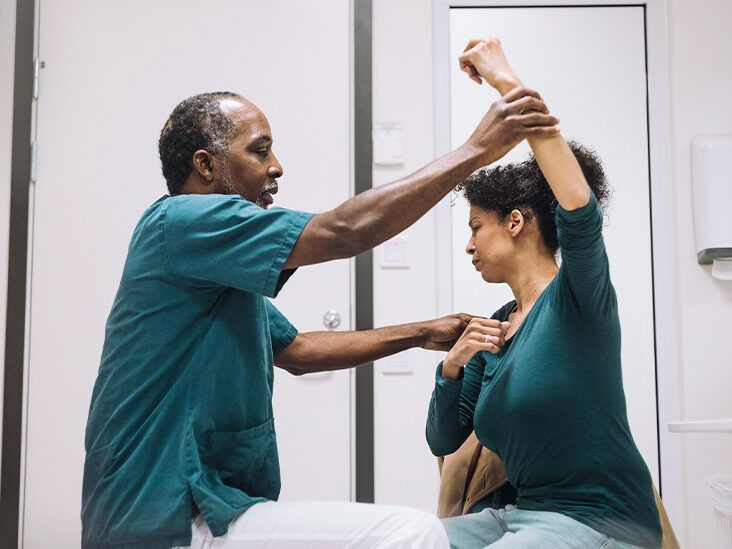
Faintish and tremulous. Melancholic; apprehensive of serious disease. Memory weak. Errors of perception. Impulsive; wants to do things in a hurry. Peculiar mental impulses. Fears and anxieties and hidden irrational motives for actions. Emotional disturbances cause appearance of hemi-cranial attacks. Brain-fag, with general debility and trembling. Hemi-crania.
Swelling of conjunctiva. Unable to keep eyes fixed steadily. Weak ciliary muscles. Paretic condition of ciliary muscle. Loss of smell.
Sensation of a splinter in throat on swallowing. Urine passes unconsciously, day and night. Emission of a few drops after having finished. Impotence. Erection fails when coition is attempted. Cancer-like ulcers. Genitals shrivel. Chronic hoarseness. Suffocative cough, as if from a hair in throat. Dyspnea. Painful spots in chest. Angina pectoris, nightly aggravation. Many people in a room seem to take away his breath.
Lumbago, spine sensitive with nocturnal pains, paraplegia; posterior spinal sclerosis. Cannot walk with eyes closed. Trembling, with general debility. Paralysis, with mental and abdominal symptoms. Rigidity of calves. Debility in calves. Walks and stands unsteadily, especially when unobserved. Numbness of arms. Post-diphtheritic paralysis.
Helleborus Niger
Sensorial depression. Sees, hears, tastes imperfectly. General muscular weakness, which may go on to complete paralysis, accompanied by dropsical effusions. Sinking sensation. State of effusion in hydrocephalus. Mania of a melancholy type. Slow in answering. Thoughtless; staring. Involuntary sighing. Complete unconsciousness. Picks lips and clothes. Forehead wrinkled in folds. Cold sweat. Stupefying headache. Rolls head day and night, moaning, sudden screams. Bores head into pillow; beats it with hands. Dull pain in occiput, with sensation of water swashing inside. Headache culminates in vomiting.
Eyeballs turn upwards, squinting, vacant look. Pupils dilated. Eyes wide open, sunken. Night-blindness. Nose dirty, dry. Rubs nose. Smell diminished. Nose pointed. Skin pale, dropsical, itching. Livid spots on skin. Sudden, watery, swelling of skin. Falling off of hair and nails. Angio-neurotic edema.
Face pale, sunken. Cold sweat. Wrinkled. Neuralgia on left side; parts so tender he cannot chew. Horrible smell from mouth. Lips dried and cracked. Tongue red and dry. Falling of lower jaw. Meaningless picking of lips. Grinding of teeth. Chewing motion. Greedily swallows cold water, though unconscious. Frequent urging to urinate, cannot urinate. Bladder overdistended. Frequent sighing. Respiration irregular. Chest constricted, gasps for breath. Hydrothorax. 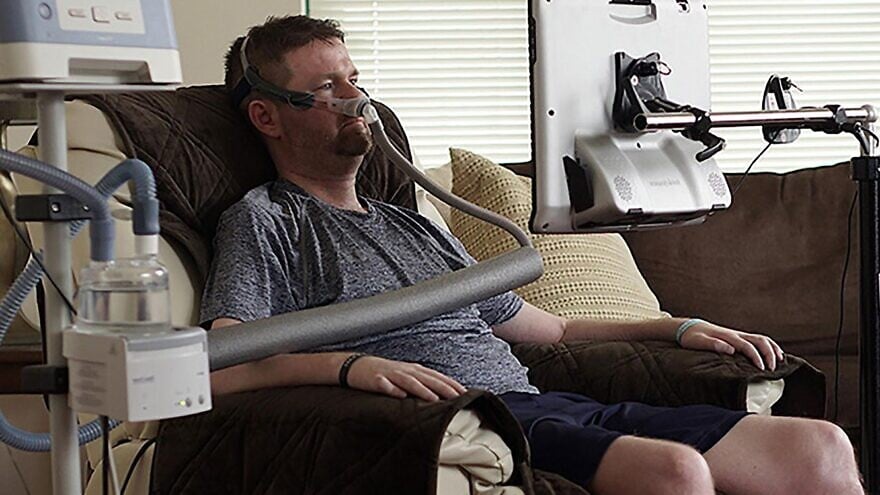
Automatic motion of one arm and leg. Limbs heavy and painful. Stretching of limbs. Thumb drawn into palm. Vesicular eruption between fingers and toes. Sudden screams in sleep. Sonorous sleep. Cannot be fully aroused.
Tuberculinum
Lax fiber, low recuperative powers, susceptible to changes in the weather. Always tired; motion causes intense fatigue; aversion to work; wants constant changes. Rapid emaciation. Epilepsy, neurasthenia and in nervous. Mentally deficient. Acute articular rheumatism. Very sensitive, mentally and physically. Nervous weakness. Trembling. Arthritis.
Mania, melancholia, insomnia and sopor. Irritable, especially when awakening. Depressed. Deep brain headaches and intense neuralgias. Nocturnal hallucinations, awakes frightened. Plica polonica. Crops of small boils, intensely painful, successively appear in the nose; green, fetid pus.
Shortness of breath. Sensation of suffocation. Bronchopneumonia. Hard, hacking cough, profuse sweating and loss of weight, rales all over chest. Deposits begin in apex of lung. Chronic eczema; itching intense. Acne.
Agaricus Muscarious
Vertigo and delirium, followed by profound sopor with lowered reflexes. Jerking, twitching, trembling, itching. Anemia, chorea, twitching ceases during sleep. Various forms of neuralgia and spasmodic affections, and neurotic skin troubles. General paralysis. Sensation as if pierced by needles of ice. Violent bearing-down pains. Pains, accompanied by sensation of cold, numbness and tingling.
Indifference. Fearlessness. Delirium characterized by singing, shouting, and muttering; rhymes and prophesies. Paroxysm of yawning. Cerebral excitement. Vertigo from sunlight, and on walking. Head in constant motion. Falling backward, as if a weight in occiput. Neuralgia with icy cold head. Stitches in urethra. Sudden and violent urging to urinate. Frequent urination.
Words seems to move, to swim, vibrating. Double vision, dim and flickering. Asthenopia from prolonged strain, spasm of accommodation. Twitching of lids and eyeballs, of muscles about the ear and noises. Facial muscles stiff; twitch; face itches and burns. Lancinating, tearing pain, as of splinters. Burning and smarting on lips. Splinter like pains in tongue. Tremulous tongue. Throat contracted. Dryness of pharynx, swallowing difficult. Scratching in throat.
Violent attacks of coughing, spasmodic, with expectoration of mucus, ends with sneeze. Labored, oppressed breathing. Bradycardia. Pulse intermittent and irregular. Cardiac region oppressed. Palpitation with redness of face.
Lumbago. Twitching of cervical muscles. Stiff all over. Pain over hips. Weakness in loins. Uncertain gait. Trembling. Cramp in soles of feet. Pain in shinbone. Neuralgia in locomotor ataxia. Paralysis of lower limbs, with spasmodic condition of arms. Numbness. Paralytic pain in arm followed by palpitation. Tearing painful contractions in the calves.
Skin – intolerable burning, itching, redness, and swelling, as from frostbites. Miliary eruption. Angioneurotic edema; rosacea. Swollen veins with cold skin. Circumscribed erythematous, papular and pustular and edematous lesions. 
Twitches during sleep. Vivid dreams. Drowsy in daytime. Yawning, followed by involuntary laughter. Copious sweat. Burning spots.
Magnesia Phosephoricum
The great anti-spasmodic medicine. Cramping of muscles with radiating pains. Neuralgic pains. Especially suited to tired, languid, exhausted patients. Indisposition for mental exertion. Goiter. Inability to think clearly. Vertigo on moving, falls forward on closing eyes, better walking in open air. Aches after mental labor, with chilliness. Sensation as if contents were liquid, as if parts of brain were changing places, as of a cap on head. Swelling of glands of face, throat and neck. Swelling of tongue. Throat soreness and stiffness, chilliness, and aching.
Supraorbital pains; relieved by warmth. Twitching of lids. Nystagmus strabismus, ptosis. Eyes hot, tired, vision blurred, colored lights before eyes. Severe neuralgic pain in ears.
Constipation in rheumatic patients due to flatulence and indigestion. Asthmatic oppression of chest. Dry, tickling cough. Spasmodic cough, with difficulty in lying down. Whooping-cough. Voice hoarse, larynx sore and raw. Intercostal neuralgia. Angina pectoris. Nervous spasmodic palpitation. Constricting pains around heart.
Involuntary shaking of hands. Paralysis agitans. Cramps in calves. Sciatica. Feet tender. Darting pains. Twitching. Chorea. Writers’ and players’ cramp. Tetanic spasms. Weakness in arms and hands, finger-tips stiff and numb. General muscular weakness.
Ginko Biloba
It improves blood flow to the brain, enhancing memory, focus, and cognitive speed. Mental weakness, memory loss (especially in elderly). Senile dementia. Alzheimer’s, vascular dementia. Ginkgo helps dilate blood vessels and reduce blood viscosity. Peripheral artery disease, Raynaud’s disease, and poor circulation to hands and feet (cold hands/feet).
Acid Picricum
Acts upon the generative organs probably through the lumbar centers of the spinal cord; prostration, weakness and pain of back, pins and needle sensation in extremities. Degeneration of the spinal cord. Paralysis. Brain fag and sexual excitement. Neurasthenia. Muscular debility. Heavy tired feeling. Myelitis with spasms and prostration. Writer’s palsy. Progressive, pernicious anemia. Uremia with complete anuria. Sallow complexion. Burning along spine. Great weakness. Tired, heavy feeling all over body, especially limbs; worse, exertion. Feet cold. Cannot get warm. Acute descending paralysis. 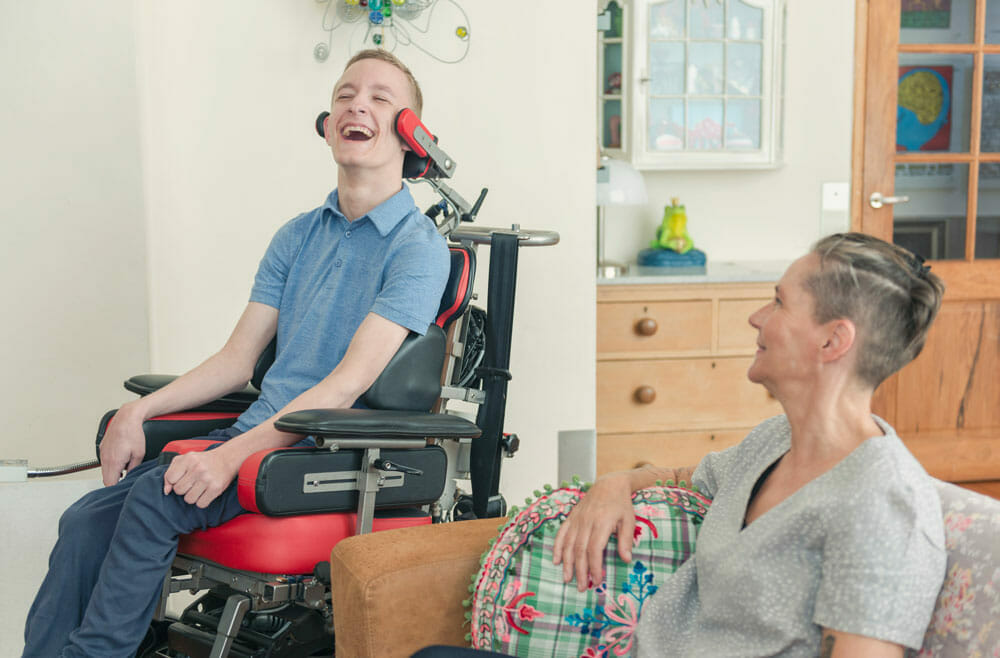
Lack of will-power; disinclined to work. Cerebral softening. Dementia with prostration, sits still and listless. Occipital pain; worse, slightest mental exertion. Vertigo and noises in ear. Boils within ears and back of neck. After prolonged mental strain, with anxiety and dread of failure at examination.
Urine scanty; complete anuria. Dribbling micturition. Inflammation of kidneys with profound weakness, dark, bloody, scanty urine. Nightly urging. Emissions profuse, followed by great exhaustion, without sensual dreams. Prostatic hypertrophy.
Cuprum Metallicum
Spasmodic affections, cramps, convulsions, beginning in fingers and toes, violent, contractive, and intermittent pain. Clonic spasms, convulsions, and epileptic attacks. Chorea brought on by fright. Fixed ideas, malicious and morose. Purple, red swelling of head, with convulsions. Bruised pain in brain and eyes on turning them. Meningitis. Head falls forward on chest. Angina pectoris. Slow pulse; or hard, full and quick. Palpitation, precordial anxiety and pain. Fatty degeneration.
Aching over eyes. Fixed, stary, sunken, glistening, turned upward. Crossed. Quick rolling of eyeballs, with closed eyes. Face distorted, pale bluish, with blue lips. Contraction of jaws, with foam at mouth. Strong metallic, slimy taste, with flow of saliva. Constant protrusion and retraction of the tongue, like a snake. Paralysis of tongue. Stammering speech. Skin bluish, marbled. Ulcers, itching spots, and pimples at the folds of joints. Chronic psoriasis and lepra.
Hiccough preceding the spasms. Nausea. Vomiting. Tense, hot and tender to touch; contracted. Neuralgia of abdominal viscera. Colic, violent and intermittent. Intussusception. Stool black, painful, bloody, with tenesmus and weakness.
Cough as a gurgling sound. Suffocative attacks. Spasm and constriction of chest; spasmodic asthma, alternating with spasmodic vomiting. Whooping-cough, with vomiting and spasms and purple face. Spasm of the glottis. Dyspnea with epigastric uneasiness. Spasmodic dyspnea before menstruation. Angina with asthmatic symptoms and cramps.
Jerking, twitching of muscles. Coldness of hands. Cramps in palms. Great weariness of limbs. Cramps in calves and soles. Epilepsy: aura begins in knees. Clenched thumbs. Clonic spasms, beginning in fingers and toes. 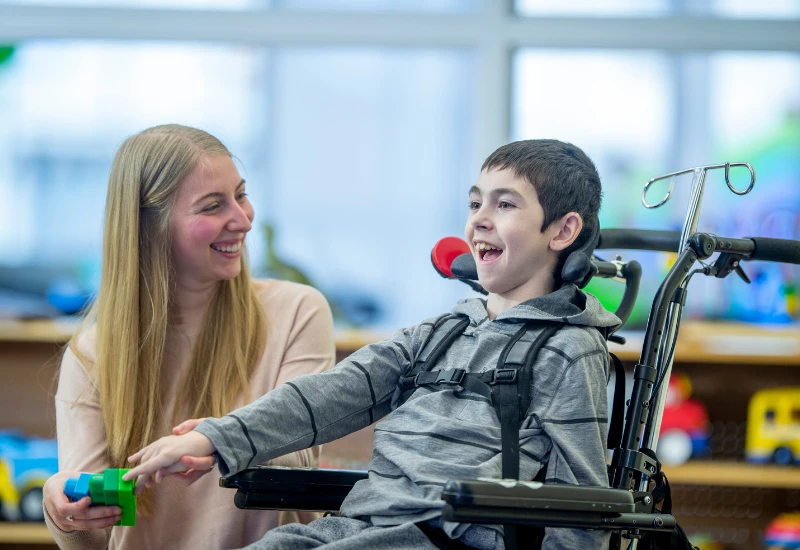
Gelsemium Sempervirens
Motor paralysis. General prostration. Dizziness, drowsiness, dullness, and trembling. Slow pulse, tired feeling, mental apathy. Paralysis of various groups of muscles. Post-diphtheritic paralysis. Muscular weakness. Complete relaxation and prostration. Lack of muscular co-ordination. Slowness of breathing, with prostration about chest. Dry cough, with sore chest and fluent coryza. Aphonia; acute bronchitis, respiration quickened, spasmodic affections of lungs and diaphragm.
Ptosis; eyelids heavy; patient can hardly open them. Double vision. Disturbed muscular apparatus. Corrects blurring and discomfort in eyes even after accurately adjusted glasses. Vision blurred, smoky. Pupils dilated and insensible to light. Orbital neuralgia, with contraction and twitching of muscles. Bruised pain back of the orbits. Deep inflammations, with haziness of vitreous. Serous inflammations. Detached retina, glaucoma and decimemides. Hysterical amblyopia. Facial muscles contracted. Lower jaw dropped.
Tongue numbed, thick, coated, yellowish, tremble, paralyzed. Difficult swallowing. Feeling of a lump in throat that cannot be swallowed. Aphonia. Itching and tickling in soft palate and Naso-pharynx. Pain in sterno-cleido-mastoid, back of parotid. Post-diphtheritic paralysis.
Urine profuse, clear, watery, with chilliness and tremulousness. Dysuria. Partial paralysis of bladder; flow intermittent. Spermatorrhea, without erections. Genitals cold and relaxed.
Slow pulse. Palpitation; pulse soft, weak, full and flowing. Pulse slow when quiet but greatly accelerated on motion. Weak, slow pulse of old age. Dull, heavy backpain. Complete relaxation of the whole muscular system. Fatigue. Pain in neck. Pain in muscles of back, hips, and lower extremities, mostly deep-seated. Loss of power of muscular control. Cramp in muscles of forearm. Professional neuroses. Excessive trembling and weakness of all limbs. Hysteric convulsions.
Lathyrus Sativus
Affects the lateral and anterior columns of the cord. Reflexes always increased. Paralytic affections of lower extremities; spastic paralysis; lateral sclerosis. Athetosis. Infantile paralysis. After influenza and wasting, exhaustive diseases where there is much weakness and heaviness, slow recovery of nerve power. Sleepy, constant yawning. Depressed; hypochondriacal. Vertigo when standing with eyes closed. Increased bladder reflex. Frequent, must hurry, else voided involuntarily.
Mouth: Burning pain in tip of tongue; with tingling and numbness of tongue and lips, as if scalded. Tips of fingers numb. Tremulous, tottering gait. Excessive rigidity of legs; spastic gait. Knees knock against each other when walking. Cramps in legs worse cold, and cold feet. Myelitis, with marked spastic symptoms. Rheumatic paralysis. Gluteal muscles and lower limbs emaciated. Legs blue; swollen, if hanging down. Stiffness and lameness of ankles and knees, toe do not leave the floor, heels do not touch floor, Muscles of calves very tense. Patient sits bent forward, straightens with difficulty.
Causticum
Manifests its action mainly in chronic rheumatic, arthritic and paralytic affections, indicated by the tearing, drawing pains in the muscular and fibrous tissues, with deformities about the joints, progressive loss of muscular strength, tendinous contractures. Broken down senile. Urine involuntary when coughing, sneezing. Expelled very slowly and sometimes retained. Involuntary during first sleep at night; also, from slightest excitement. Retention after surgical operations. Loss of sensibility on passing urine. 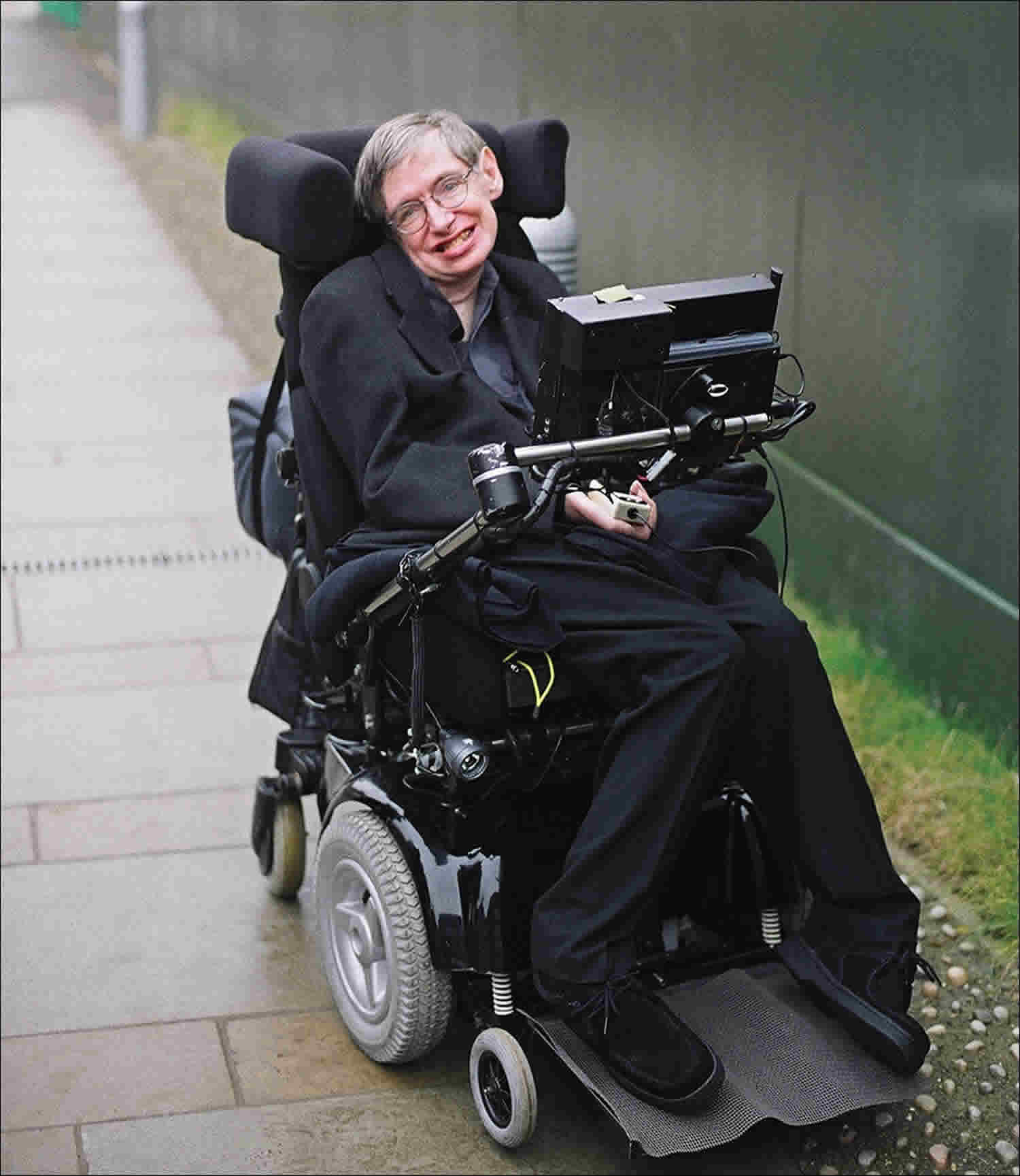
This weakness progresses until patient have gradually appearing paralysis. Local paralysis, vocal cords, muscles of deglutition, of tongue, eyelids, face, bladder and extremities. Ringing, roaring, pulsating, with deafness; words and steps re-echo. Bites inside of cheek from chewing. Paralysis of tongue, with indistinct speech. Rheumatism of articulation of lower jaw.
Stiffness between shoulders. Dull pain in nape of neck. Sciatica, with numbness. Paralysis of single parts. Dull, tearing pain in hands and arms. Heaviness and weakness. Tearing joints. Unsteadiness of muscles of forearm and hand. Numbness; loss of sensation in hands. Contracted tendons. Weak ankles. Cannot walk without suffering. Rheumatic tearing in limbs. Burning in joints. Slow in learning to walk. Unsteady walking and easily falling. Restless legs at night. Cracking and tension in knees; stiffness in hollow of knee. Itching on dorsum of feet.
Conium Maculatum
Conium is an excellent remedy, such as difficult gait, trembling, sudden loss of strength while walking, painful stiffness of legs. etc. Debility, hypochondriasis, urinary troubles, weakened memory, sexual debility etc. Great debility in the morning in bed. Weakness of body and mind, trembling, and palpitation. Arterio-sclerosis. Caries of sternum. Enlarged glands.
Excitement causes mental depression. Depressed, timid, averse to society, and afraid of being alone. No inclination for business or study; takes no interest in anything. Memory weak; unable to sustain ‘any mental effort. Extremities heavy, weary, paralyzed; trembling; bands unsteady; fingers and toes numb. Muscular weakness, especially of lower extremities. Perspiration of hands. Putting feet on chair relieves pain.
Vertigo, when lying down, and when turning over in bed, when turning head sidewise, or turning eyes; worse, shaking head, slight noise or conversation of others, especially towards the left. Photophobia and excessive lachrymation. Corneal pustules. Dim-sighted. On closing eyes, he sweats. Paralysis of ocular muscles.
Urine: Much difficulty in voiding. Urine flows and stops again. Interrupted discharge. Dribbling. Dry cough, almost continuous, hacking. Expectoration only after long coughing. Want of breath on taking the least exercise; oppressed breathing, constriction of chest; pains in chest. Dorsal pain between shoulders. Ill effects of bruises and shocks to spine. Coccygodynia. Dull aching in lumbar and sacral region.
Aconitum Napellus
Forgetfulness and trembling of limbs. Vertigo and confusion, with tinnitus. With giddiness, dimness of vision, and muscular weakness. Pupils dilated (both from internal and external use). Complete blindness; accompanying dilatation of pupils, sight returning when pupils contract. Vision hazy, with giddiness and nausea. Pupils insensible to light.
Burning on tip of tongue and lips. Taste completely lost/impaired. Burning anguish in throat. Every attempt to swallow followed by spasms like hydrophobia but not renewed by sight of water. Difficulty in voiding urine. dysuria and occasionally retention with hypogastric pain.
Respiration difficult. Oppressive anguish in precordial region. Sighing breathing. Pulse at first, on entering a warm room, more frequent, then sinks far below normal, small, weak, intermittent. Sounds of heart only heard at apex. Limb’s weakness, trembling, burning, creeping, tingling, numbness. 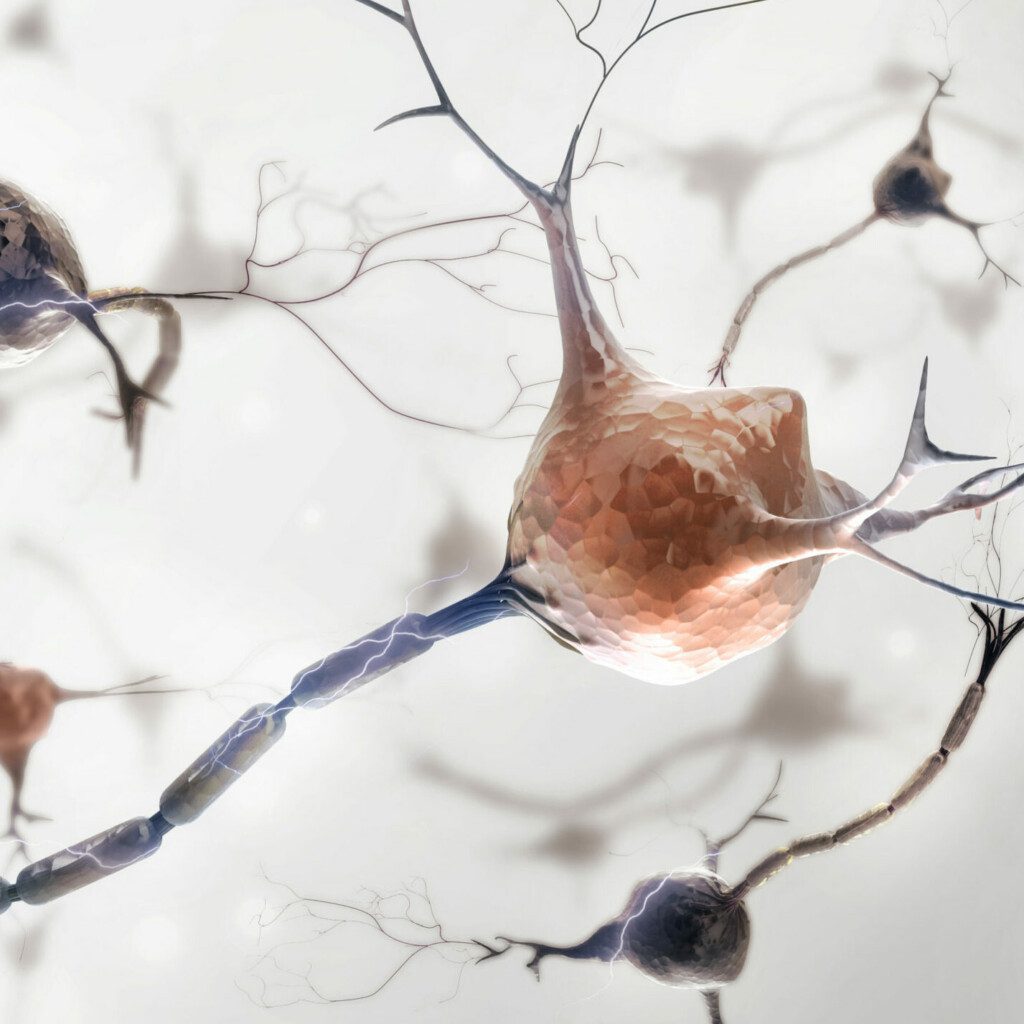
Arsenicum album
Anemia and chlorosis. Degenerative changes. Gradual loss of weight from impaired nutrition. Unable to lie down; fears suffocation. Air-passages constricted. Asthma worse midnight. Burning in chest. Suffocative catarrh. Cough worse after midnight; worse lying on back. Expectoration scanty, frothy. Darting pain through upper third of right lung. Wheezing respiration. Hemoptysis with pain between shoulders; burning heat all over. Trembling, twitching, spasms, weakness, heaviness, uneasiness in extremities. Cramps in calves. Swelling of feet. Sciatica. Burning pains. Peripheral neuritis. Diabetic gangrene. Paralysis of lower limbs with atrophy.
Tachycardia, pain, dyspnea, faintness. Irritable heart in smokers and tobacco-chewers. Pulse more rapid in morning. Dilatation. Cyanosis. Fatty degeneration. Angina pectoris, with pain in neck and occiput.
Urine scanty, burning, involuntary. Bladder as if paralyzed. Albuminous. Epithelial cells; cylindrical clots of fibrin and globules of pus and blood. After urinating, feeling of weakness in abdomen. Bright’s disease. Diabetes. Weakness in small of back. Drawing in of shoulders. Pain and burning in back.
Calcarea carbonica
This great Hahnemannian anti-psoric is a constitutional remedy par excellence. Its chief action is centered in the vegetative sphere, impaired nutrition being the keynote of its action, the glands, skin, and bones, being instrumental in the changes wrought. Increased local and general perspiration, swelling of glands, scrofulous and rachitic conditions. Incipient phthisis. Tickling cough, fleeting chest pains, nausea, acidity and dislike of fat. Gets out of breath easily. A jaded state, mental or physical, due to overwork. Abscesses in deep muscles; polypi and exostoses. Pituitary and thyroid disfunction.
Raised blood coagulability. Is a definite stimulant to the periosteum. Is a hemostatic and gives this power probably to the gelatine injections. Easy relapses, interrupted convalescence. Persons of scrofulous type, who take cold easily, with increased mucous secretions.
Kali phosphoricum
Prostration. Weak and tired. Especially adapted to the young. Marked disturbance of the sympathetic nervous system. Conditions arising from want of nerve power, neurasthenia, mental and physical depression. Drooping of eyelids. Paralysis of the vocal cords. Anxiety, nervous dread, lethargy. Indisposition to meet people. Extreme lassitude and depression. Very nervous, starts easily, irritable. Brain-fag; hysteria; night terrors.
Somnambulance. Loss of memory. Slightest labor seems a heavy task. Great despondency about business. Shyness; disinclined to converse. Incontinence of urine. Paralytic lameness in back and extremities. Exertion aggravates. Pains, with depression, and subsequent exhaustion.
Lycopodium Clavatum
Numbness, also drawing and tearing in limbs, especially while at rest or at night. Heaviness of arms. Tearing in shoulder and elbow joints. One foot hot, the other cold. Chronic gout, with chalky deposits in joints. Profuse sweat of the feet. Pain in heel on treading as from a pebble. Painful callosities on soles; toes and fingers contracted. Sciatica, worse right side. Cannot lie on painful side. Hands and feet numb. Right foot hot, left cold. Cramps in calves and toes at night in bed. Limbs go to sleep. Twitching and jerking. 
Tickling cough. Dyspnea. Tensive, constrictive, burning pain in chest. gradually developing, functional power weakening, with failures of the digestive powers, where the function of the liver is seriously disturbed. Atony. Malnutrition. Mild temperaments of lymphatic constitution, with catarrhal tendencies
Phosphorus
Irritation, inflammation and degeneration of mucous membranes, serous membranes. Inflammation of spinal cord and nerves – causing paralysis. Destroyed bone, especially the lower jaw and tibia. Disorganized blood – causing fatty degeneration of blood vessels and every tissue and organ of the body and thus gives rise to hemorrhages, and hematogenous jaundice.
Destructive metabolism. Yellow atrophy of the liver and sub-acute hepatitis. Loss of animal fluids, with great nervous debility, emaciation, amative tendencies. Great susceptibility to external impressions, to light, sound, odors, touch, electrical changes, thunderstorms. Suddenness of symptoms, sudden prostration, faints, sweats, shooting pains, etc. Polycythemia. Blood extravasations: fatty degenerations, cirrhosis, caries, are pathological states.
Muscular pseudo-hypertrophy, neuritis. Inflammation of the respiratory tract. Paralytic symptoms. Ill effects of iodine and excessive use of salt. Tertiary syphilis, skin lesions, and nervous debility. Scurvy. Pseudo-hypertrophic paralysis. Ataxia and dynamic. Osteo myelitis. Bone fragility.
Pulsatilla Pratensis
The disposition and mental state are the chief guiding symptoms to the selection of Pulsatilla. Sad, crying readily; weeps when talking; changeable, contradictory. Mucous membranes are all affected. Discharges thick, bland, and yellowish green. Often indicated after abuse of allopathic Iron tonics, and after badly managed measles by allopath. Thirstless, peevish, and chilly. Great sensitiveness. Wants the head high. Feels uncomfortable with only one pillow. Lies with hands above head. Involuntary micturition at night, while coughing or passing flatus. After urinating, spasmodic pain in bladder.
Capricious hoarseness; comes and goes. Dry cough in evening and at night; must sit up in bed to get relief; and loose cough in the morning, with copious mucous expectoration. Pressure upon the chest and soreness. Great soreness of epigastrium. Urine emitted with cough. Pain as from ulcer in middle of chest. Expectoration bland, thick, bitter, greenish. Short breath, anxiety, and palpitation. Smothering sensation on lying down.
Drawing, tensive pain in thighs and legs, with restlessness, sleeplessness and chilliness. Pain in limbs, shifting rapidly; tensive pain, letting up with a snap. Numbness around elbow. Hip-joint painful. Knees swollen, with tearing, drawing pains. Boring pain in heels toward evening; suffering worse from letting the affected limb hang down. Veins in forearms and hands swollen. Feet red, inflamed, swollen. Legs feel heavy and weary.
Natrum muriaticum
Great debility: most weakness felt in the morning in bed. Constrictive sensation throughout the body. Great weakness and weariness. Oversensitive to all sorts of influences. Hyperthyroidism. Psychic causes of disease; ill effects of grief, fright, anger, etc. Depressed, particularly in chronic diseases. Consolation aggravates. Irritable; gets into a passion about trifles. Awkward, hasty. Wants to be alone to cry. Tears with laughter. Eyelids heavy. Muscles weak and stiff. Letters run together. Sees sparks. Fiery, zigzag appearance around all objects. Asthenopia due to insufficiency of internal recti muscles. 
Numbness, tingling of tongue, lips, and nose. Vesicles and burning on tongue. Cough from a tickling in the pit of stomach, accompanied by stitches in liver and spurting of urine. Stitches all over chest. Cough, with bursting pain in head. Shortness of breath. Tachycardia. Sensation of coldness of heart. Heart and chest feel constricted. Fluttering, palpitating; intermittent pulse. Heart’s pulsations shake body. Intermits on lying down.
Pain in back, with desire for some firm support. Every movement accelerates the circulation. Palms hot and perspiring. Arms and legs, but especially knees, feel weak. Hangnails. Dryness and cracking about fingernails. Numbness and tingling in fingers and lower extremities. Ankles weak and turn easily. Painful contraction of hamstrings. Cracking in joints on motion. Coldness of legs with congestion to head, chest, and stomach.
Silicea Terra
Imperfect assimilation and consequent defective nutrition. It goes further and produces neurasthenic states in consequence, and increased susceptibility to nervous stimuli and exaggerated reflexes. Diseases of bones, caries and necrosis. Organic changes. Periodical states; abscesses, quinsy, headaches, spasms, epilepsy, feeling of coldness before an attack. Keloid growth. Side effects of vaccination. Suppurative processes. Ripens abscesses since it promotes suppuration.
Sciatica, pains through hips, legs and feet. Cramp in calves and soles. Loss of power in legs. Tremulous hands. Paralytic weakness of forearm. Affections of fingernails, especially if white spots on nails. Ingrowing toenails. Icy cold and sweaty feet. The parts lain on go to sleep. Offensive sweat on feet, hands, and axillae. Sensation in tips of fingers, as if suppurating. Pain in knee. Calves tense and contract. Pain beneath toes. Soles sore. Soreness in feet from instep through to the sole. Suppurates.
P. S: This article is only for doctors and students having good knowledge about Homeopathy and allopathy.

For proper consultation and treatment, please visit our clinic.
 Dr. Sayyad Qaisar Ahmed (MD {Ukraine}, DHMS), Abdominal Surgeries, Oncological surgeries, Gastroenterologist, Specialist Homeopathic Medicines.
Dr. Sayyad Qaisar Ahmed (MD {Ukraine}, DHMS), Abdominal Surgeries, Oncological surgeries, Gastroenterologist, Specialist Homeopathic Medicines.
Senior research officer at Dnepropetrovsk state medical academy Ukraine.
Location: Al-Haytham clinic, Umer Farooq Chowk Risalpur Sadder (0923631023, 03119884588), K.P.K, Pakistan.
Find more about Dr Sayed Qaisar Ahmed at:
https://www.youtube.com/Dr Qaisar Ahmed
https://www.facebook.com/ahmed drqaisar
